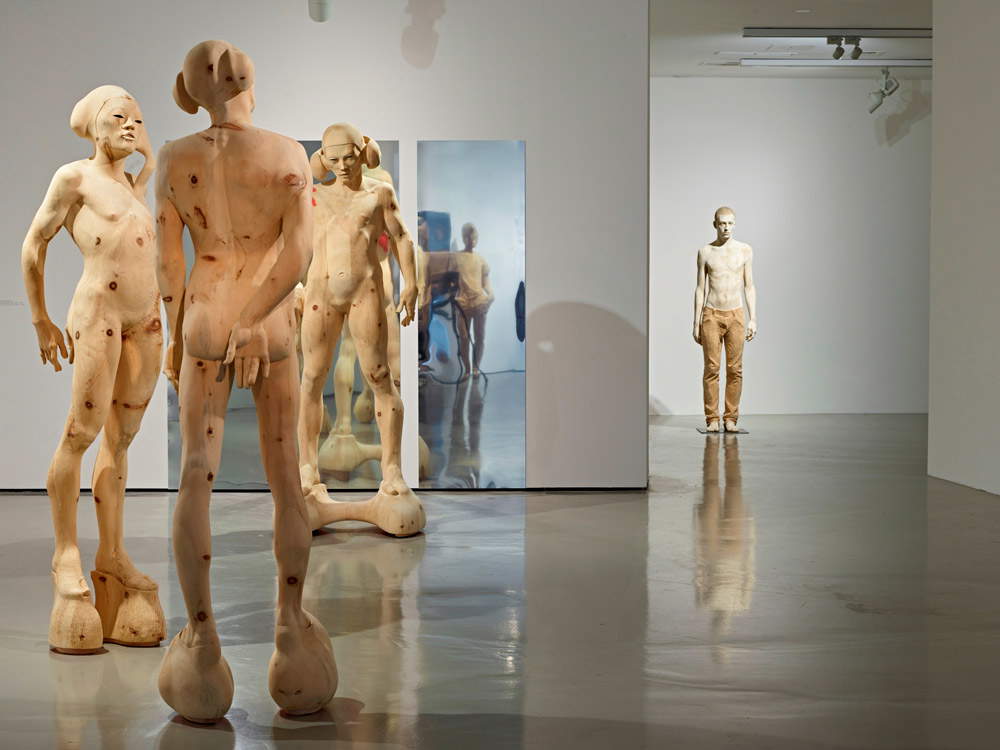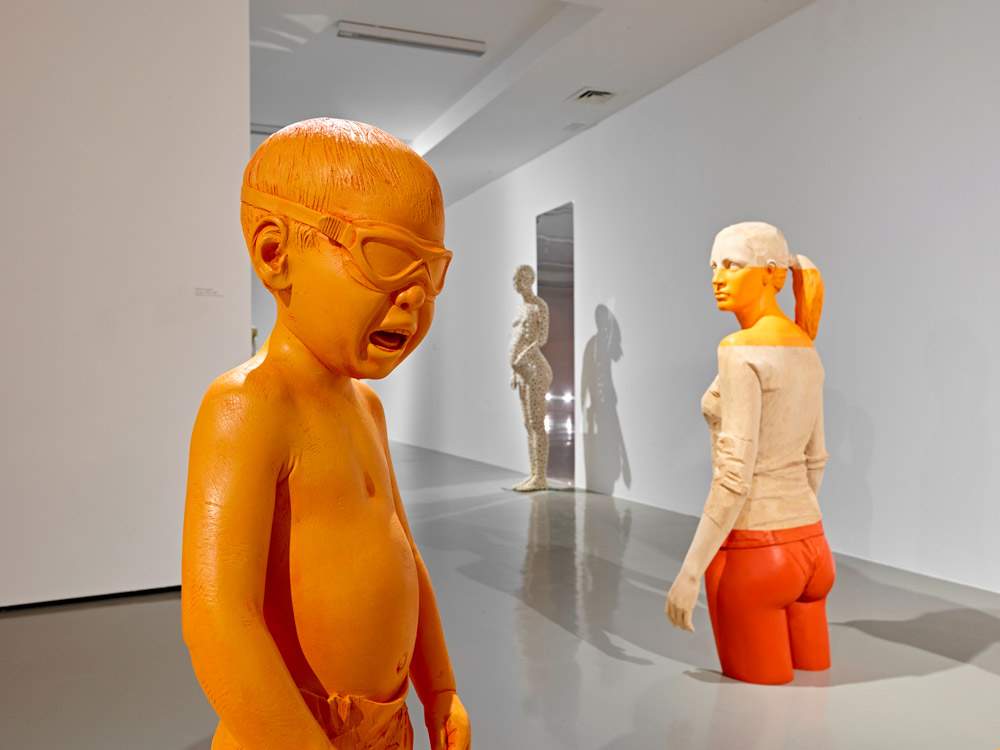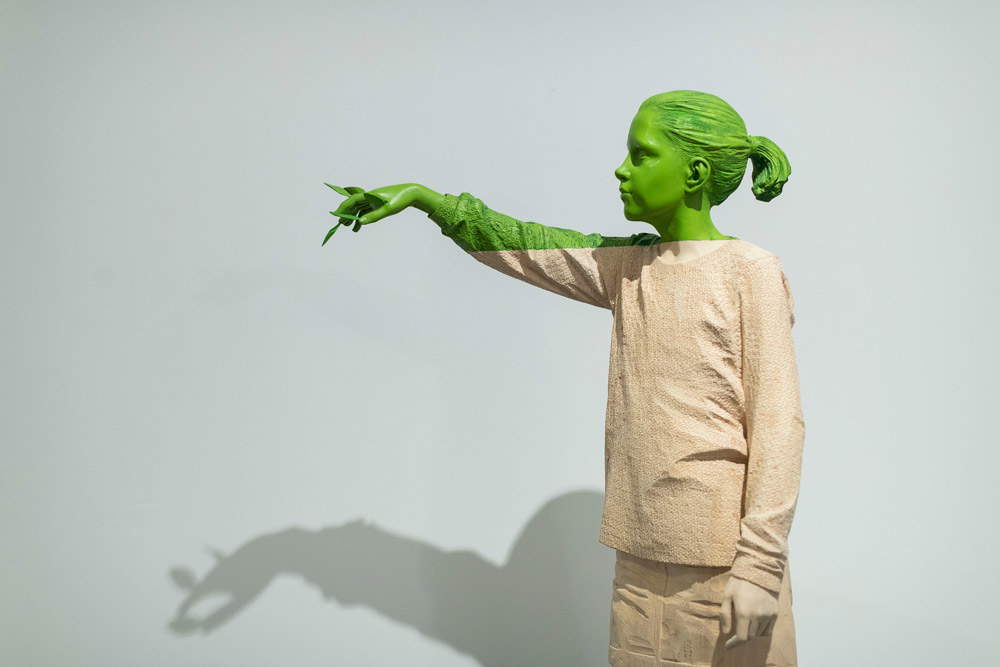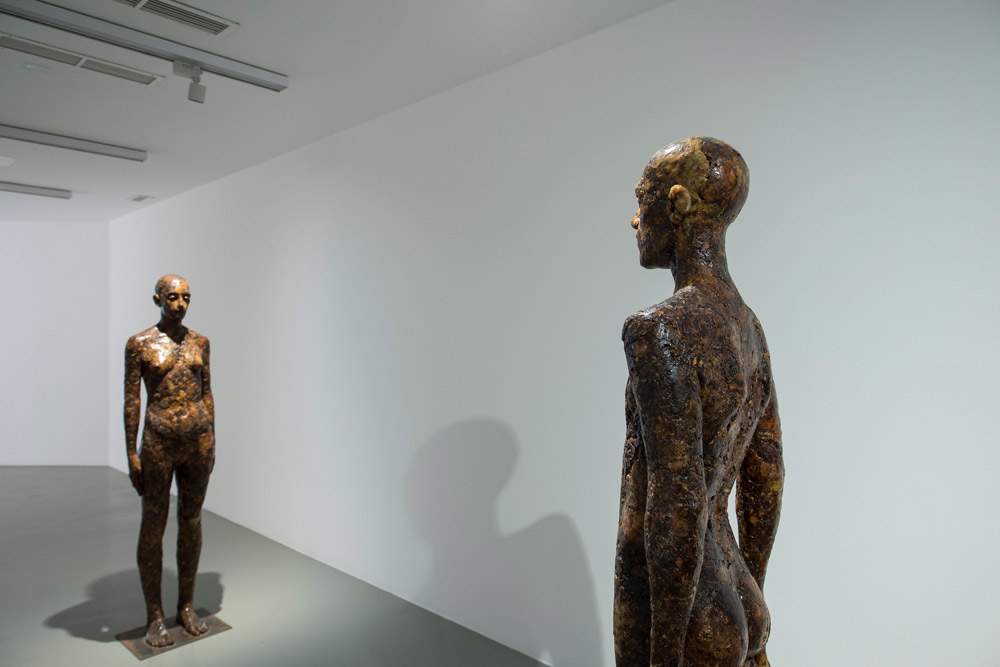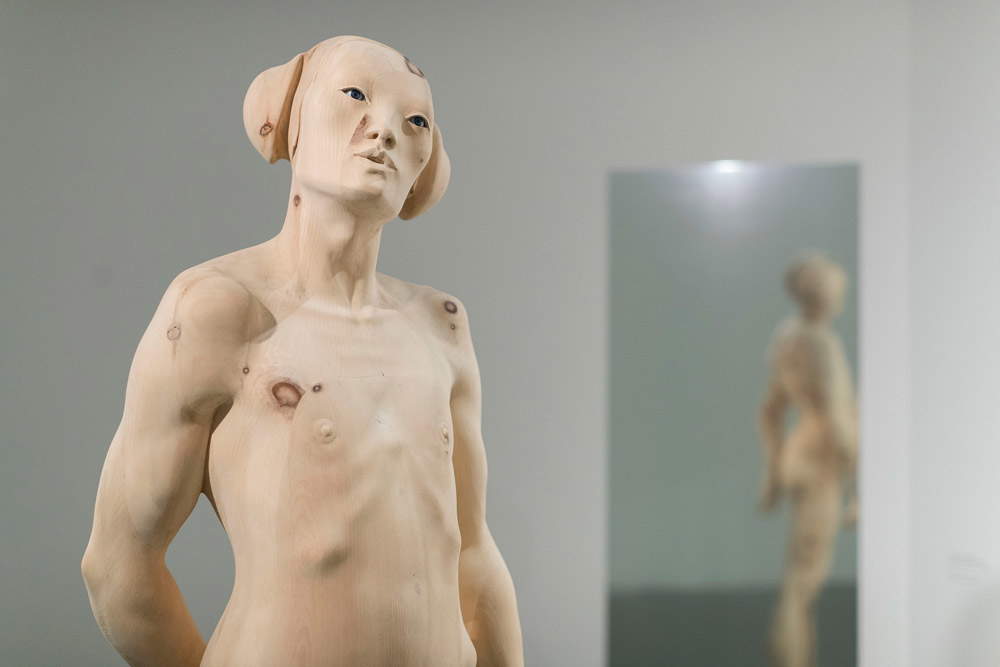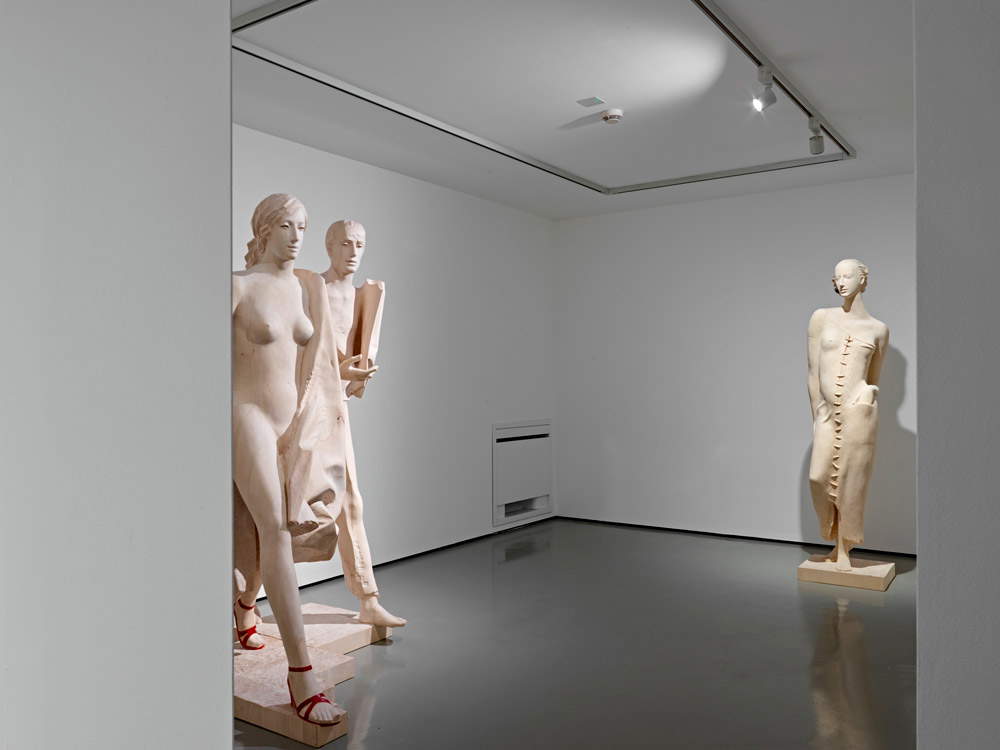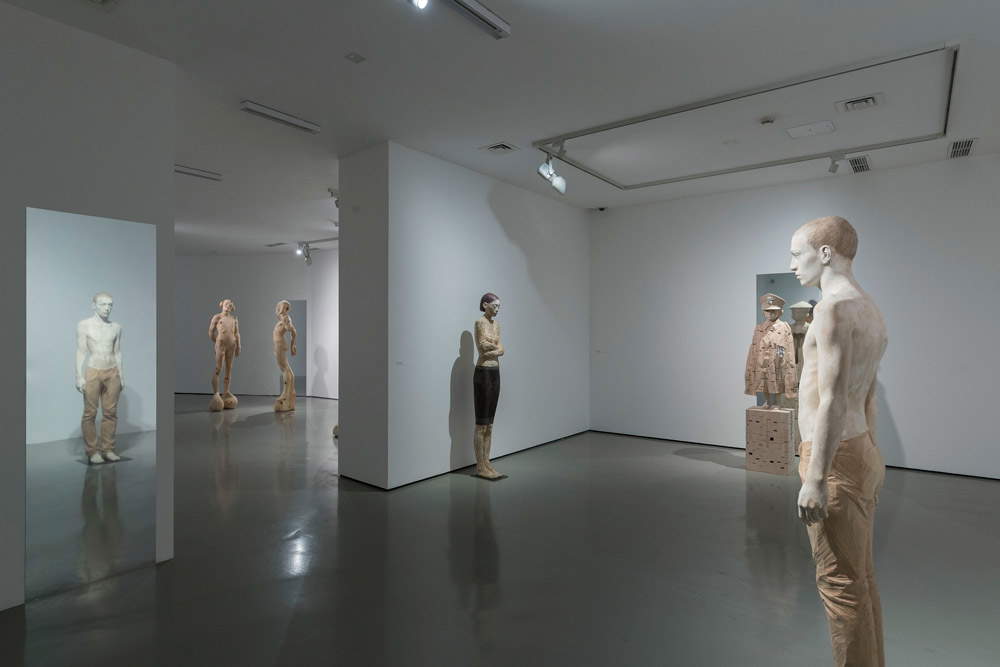by Redazione , published on 11/06/2017
Categories: News Focus
/ Disclaimer
The exhibition Legno | Lën | Holz is open at the Trento Civic Gallery, showcasing the surprising and exciting woodcarvings of contemporary Ladin masters.
One of the artistic peculiarities of Ladinia, that is, of that area of the Dolomites that includes the so-called “five valleys” (Gardena, Fassa, Badia, Livinallongo and Ampezzano), is its characteristic art of wood carving. Anyone who has visited those places will undoubtedly be familiar with traditional wood carving, which has its roots in very ancient times: particularly flourishing during the Middle Ages, it then had a further “moment of glory” in the Baroque era. From the workshops of sculptors in Val Gardena (the area in which this tradition is perhaps most deeply rooted) and the surrounding areas came out the most diverse artifacts: objects for everyday use, for the home, for the kitchen and for work, toys for children, votive statues destined for chapels and churches but also demanding apparatuses for the largest buildings of worship, such as those that one of the greatest eighteenth-century interpreters of wooden sculpture, Johann Perger, executed for the churches in the area. A tradition that constitutes an identity trait for the people of these valleys, and which today survives stronger than ever, indeed: there are artists who for several decades have begun to diverge from the most stringent “orthodoxy” in order to develop current research, in line with the challenges posed by contemporaryart and today’s society.
Wood sculptures by the most up-to-date and original contemporary Ladin masters are on display this summer at the Trento Civic Gallery (June 2 through September 17, 2017) in an exhibition with a trilingual title, in Italian, Ladino and German: Legno | Lën | Holz. An Itinerary in Contemporary Sculpture, curated by Gabriele Lorenzoni and organized by the Mart (Museum of Modern and Contemporary Art of Trento and Rovereto) in partnership with the Museum Ladin Ciastel de Tor in San Martino in Badia and the Doris Ghetta Gallery in Ortisei. The exhibition, open daily except Mondays from 10 a.m. to 1 p.m. and 2 p.m. to 6 p.m. (with two-euro admission and free for Mart Membership, children under 14, and every first Sunday of the month), showcases works by fifteen artists, among the most influential in contemporary wood sculpture, belonging to different generations, and all trained in Val Gardena, but almost always strong in high-level international experience as well. This is, moreover, the first exhibition in Italy dedicated to contemporary wood sculpture: the primary objective is to present what to all intents and purposes is, as we read in the presentation, an art form that has landed “in its own right in contemporary art,” of which it represents “a minority but authoritative voice, capable of garnering increasing interest and attention from critics, museums and collectors, both public and private,” and which sees in the Gardena school its point of excellence. The most innovative production of contemporary Ladin sculptors, which often arrives at surprising and unexpected results, is shown to the public through a selection centered around research on the human figure: there are about forty works on display, all made with the manual technique ofwood carving and many of which are new works made especially for the Trentino exhibition.
 |
| The exhibition Legno | Lën | Holz. Installation view |
 |
| Works at the exhibition Legno | Lën | Holz in Trento |
 |
| Works at the exhibition Legno | Lën | Holz in Trento |
The tour can begin with the works of Adolf Vallazza (Ortisei, 1924), one of the first artists to depart from strict tradition: an acknowledged and celebrated master (he has also exhibited in Venice at Ca’ Pesaro, in Florence at Palazzo Medici-Riccardi, at the GAM in Turin and boasts a solo show at Palazzo dei Diamanti in Ferrara; moreover, several of his works are in collections around the world), Vallazza sees wood almost as a living being, and his research has undergone various phases and changes of direction, from a more markedly expressionist beginning through a transitional phase in which the figures were broken down, recalling the manner of the Cubists, to an abstraction that is nonetheless never entirely detached from reality and is endowed with a strong spiritual charge. In the exhibition it is possible to find other artists who belong to the generations of the early “experimenters,” such as Livio Conta (Monclassico, 1939), present with a work created this year, and Hermann Josef Runggaldier (Ortisei, 1948), a sculptor capable of establishing a sense of strong intimacy with the observer of his works that investigate man’s relationship with his own way of being in modern times.
Also present are artists born in the 1950s and 1960s, such as Arnold Holzknecht (Brixen, 1960), Walter Moroder (Ortisei, 1963), Willy Verginer (Brixen, 1957) and Bruno Walpoth (Brixen, 1959). Holzknecht, one of the most peculiar artists, takes the stylization of the human figure to its minimum in order to reflect above all on space and surface, arriving at an abstraction that looks to international minimal art. On the other hand, the research of Moroder, Verginer and Walpoth, who instead remain adherent to a figuration that, however, always reaches different outcomes, are of the opposite sign: Moroder’s fixed, hieratic statues have an ancient echo that almost seems to have their roots in archaic Greece; Verginer’s, often characterized by a certain dose of irony, operate a fusion with painting by inserting the element of color to accentuate the dynamism (and in this case also the surreal aura) of certain solutions; while Walpoth’s sculptures are mainly portraits, mostly half-length or close-up, that aim to investigate the emotions andexpressiveness of the subjects.
 |
| Arnold Holzknecht, Figure, detail (2008; wood; Courtesy Doris Ghetta Gallery, Ortisei) |
 |
| Willy Verginer, Komm lieber Mai und mache... (2015; wood; Private collection) |
 |
| Bruno Walpoth, Mateo (2011; wood; Courtesy Galerie Frank Schlag & Cie, Essen) |
Then there are many artists from younger generations, often pupils of the masters mentioned above. The Trento exhibition thus features the works of Giorgio Conta (Cles, 1978), son of Livio, author of a particular reinterpretation of traditional sacred-themed sculpture but also of scenes taken from the ordinary (his only work on display belongs to this case), by Matthias Sieff (Cavalese, 1982), who interprets the human body by dilating the volumes and likening the structure of the body to that of a building and who is presented in Trento with two sculptures, and by the three Demetzs, Peter (Bolzano, 1969), Aron (Vipiteno, 1972) and Gerhard (Bolzano, 1972). They come from a family of artists (Aron and Gerhard are cousins, moreover) and decline realist sculpture according to three different visions: Peter sticks to an evocative and exciting hyperrealism that captures his characters in fragments of everyday life, Aron focuses on theaction of time, nature and man on things (and on man himself) by introducing burns and abrasions, and Gerhard, whose favorite subjects are children (his production abounds in child portraits), using non-finishing as his signature technique, intends to reflect on the processes of formation and transformation, with particular reference to the changes in the human soul. Closing the exhibition are the youngest artist on display, Fabiano De Martin Tropanin (Padola di Comelico, 1984), with his works intended to enhance the expressiveness of his subjects, Peter Senoner (Bolzano, 1970), an artist who has lived for long periods of time on three different continents and who sums up his experiences to give life to an art whose bizarre protagonists seem to come from other dimensions, and finally Andreas Senoner (Bolzano, 1982), who deals withalienation, difficulties and the sense of man’s disorientation in contemporary society.
 |
| Aron Demetz, Man Woman (2007; wood; Courtesy Galleria Doris Ghetta, Ortisei) |
 |
| Gerhard Demetz, Zinnsoldat (2017; wood; Courtesy Jack Shainman Gallery, New York) |
 |
| Peter Senoner, LEM (2002-2005; wood; Private collection) |
These are artists who have exhibited in the most diverse contexts, training, after their first apprenticeships in the workshops of local masters, at Art Schools and Academies all over the world, also participating in relevant international events, forging friendships with other great artists, working with the most prestigious galleries. Each work has its own soul and its own way of reaching the viewer: an interesting operation that, we read again from the presentation, “raises questions about the genre and the very practices of figuration; it explores as much the ancient, traditional character of identity in the history of Western art, as it does questions about becoming, transformations, accommodations,” and again “contains and proposes, as an inescapable element of investigation, the question of the viewer’s gaze in its relational, self-catalytic and mythopoietic meaning.”
To conclude, some photos of the exhibition:
Warning: the translation into English of the original Italian article was created using automatic tools.
We undertake to review all articles, but we do not guarantee the total absence of inaccuracies in the translation due to the program. You can
find the original by clicking on the ITA button. If you find any mistake,please contact us.

